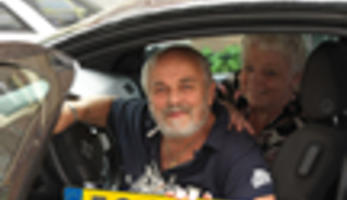IInnovation of the system of parking permits and rates
Summary
Utrecht suffers from extensive car traffic in the city centre. Through the introduction of new parking policies, the city attempted to reduce increasing car traffic
Implementing sustainable mobility
Parking space is limited in the old city centre of Utrecht and the city has been struggling to put an efficient parking policy in place while traffic keeps increasing. To break new ground in parking and traffic regulation, Utrecht decided to develop an innovative system of parking permits and rates. The measure consisted of a digitised parking system and research into advanced digitised applications of parking products, and the issuing of parking products. Utrecht looked into digital permits, digital enforcement and mobile solutions.
The overall goal was:
• To implement an efficient parking policy in the urban area of Utrecht that will manage scarce parking space and reduce increasing car traffic in the city centre.
Utrecht had different parking rates, in different location. Parking costs were higher in the centre than in the surrounding areas. In some places there are parking permits for residents in combination with parking rates for visitors. This system will be extended to more areas in the city.
On January 1st, 2007, the city of Utrecht has considerably raised the rates for street parking. The rate of parking permits for residents (a second car) is also part of a study. For residents and businesses parking permit quotas will be determined per parking zone based on demand and the number of parking spaces. The level of short-stay parking tariffs will be set high to entice drivers to park their cars further away from the city centre or to choose alternative modes of transport.
Progress
The evaluation approach focused on society and economic indicators. Impact evaluation showed that the innovation of the parking system was successful on many levels:
The payment behaviour changed as the percentage of short-term parked cars with a ticket increased by 10% between 2010 and 2012 compared to the business-as-usual situation, while the number of enforcement officers decreased from 63 in 2008 to 45 in 2012. Despite the increased tariffs and the decreased number of short-term stay tickets the number of day-, evening- and visitor permit parking tickets sold increased. It cannot be proved that this was purely the effect of the digitising, but the increases are very likely the effect of the improved and more user friendly digitised products.
Furthermore in the first few months almost 15% of paid parking by visitors was done by mobile phone parking highlighting the accomplishment of this measure. Since the number of visitors to the parking reception desk decreased by more than 10,000 per year compared to the business-as-usual situation, the personnel costs of the Department of Parking decreased proportionally. Likewise, the introduction of the scan car has been a financial success as the number of enforcement officers decreased.
One of the barriers encountered concerns the data collection. There have been political discussions about the privacy of car parkers which resulted in the political position that users need to give permission to the city before the city can use personal information. Hence the registration of license plates could not be implemented which reduced the effectiveness of the enforcement and accuracy of collected data.
Since 2008, the city of Utrecht is in charge of parking enforcement. This augmentation of the responsibilities of the Parking Department was a relevant driver which enabled the successful implementation and ensured a long-term parking management strategy.
The public acceptance and appropriation of the new parking system contributed to the success of the measure. This highlights that the communication strategy was profitable for the measure and that the implemented products responded efficiently to the current user needs. For the implementation of similar measures, recommendations arising from Utrecht´s experience are: (i) to establish a productive and continuous dialog with local politicians and be aware of the political agenda during the planning process, (ii) to determine and establish an evaluation strategy from the earliest stage of the process and (iii) be aware that technological progresses can occur sometimes in a shorter time than the time required to raise public awareness and achieve political decisions, therefore it is recommended to inform stakeholders continuously on updates and progresses achieved during the process.
Outcomes
The overall result of the evaluation showed that the measure was successful and contributed to improve parking management in the city of Utrecht. Researches on new alternative products will be carried on under the supervision of the Parking Department with the aim to incentive car users to shift towards cleaner cars by offering them favourable parking tariffs. Additionally, another 150 machines will be installed after the CIVITAS MIMOSA period in 2013.







